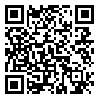Volume 28 - Supplementary
IBJ 2024, 28 - Supplementary: 249-249 |
Back to browse issues page
Download citation:
BibTeX | RIS | EndNote | Medlars | ProCite | Reference Manager | RefWorks
Send citation to:



BibTeX | RIS | EndNote | Medlars | ProCite | Reference Manager | RefWorks
Send citation to:
Nasseri A, Ganji A, Ranjbarnia M, Heidari H. Effect of Nigella sativa on Glucose Levels, Insulin Resistance, Body Weight, and Ovarian Histology in Polycystic Ovary Syndrome. IBJ 2024; 28 :249-249
URL: http://ibj.pasteur.ac.ir/article-1-4677-en.html
URL: http://ibj.pasteur.ac.ir/article-1-4677-en.html
Abstract:
Introduction: Overweight and diabetes are among the most important human problems in today's world. The aim of this study was to evaluate the effect of Nigella sativa on serum insulin level, insulin resistance, body weight, and tissue changes, which was conducted on rats suffering from polycystic ovary syndrome (PCOS).
Methods and Materials: This experimental study was carried out on 21-day-old Wistar female rats (n = 36; 60 ± 10 g). Rats were divided into six groups (n = 6 in each group): (1) control, (2) PCOS induced by dehydroepiandrosterone (DHEA; 60 mg/kg/subcutaneously), (3) PCOS + metformin (30 mg/kg), and (4), (5), and (6) experimental groups receiving DHEA combined with hydroalcoholic extract of Nigella sativa seeds at doses of 50, 100, and 200 mg/kg, respectively. After 30 days of treatment, blood samples were obtained to evaluate glucose and insulin. Ovary tissue was used for histopathological study.
Results: Our results indicated that the serum levels of luteinizing hormone, testosterone, glucose, insulin resistance, malondialdehyde, and insulin (p = 0.00), as well as estrogen, increased, while the levels of progesterone (p = 0.01) and antioxidant enzymes in the PCOS group decreased (p = 0.00).
Conclusions and Discussion: The administration of Nigella sativa in polycystic ovary syndrome rats led to a reduction in insulin resistance, insulin reduction, body weight loss, and ovarian tissue improvement. The role of Nigella sativa in controlling blood sugar is due to the insulin-like properties of this plant.

Methods and Materials: This experimental study was carried out on 21-day-old Wistar female rats (n = 36; 60 ± 10 g). Rats were divided into six groups (n = 6 in each group): (1) control, (2) PCOS induced by dehydroepiandrosterone (DHEA; 60 mg/kg/subcutaneously), (3) PCOS + metformin (30 mg/kg), and (4), (5), and (6) experimental groups receiving DHEA combined with hydroalcoholic extract of Nigella sativa seeds at doses of 50, 100, and 200 mg/kg, respectively. After 30 days of treatment, blood samples were obtained to evaluate glucose and insulin. Ovary tissue was used for histopathological study.
Results: Our results indicated that the serum levels of luteinizing hormone, testosterone, glucose, insulin resistance, malondialdehyde, and insulin (p = 0.00), as well as estrogen, increased, while the levels of progesterone (p = 0.01) and antioxidant enzymes in the PCOS group decreased (p = 0.00).
Conclusions and Discussion: The administration of Nigella sativa in polycystic ovary syndrome rats led to a reduction in insulin resistance, insulin reduction, body weight loss, and ovarian tissue improvement. The role of Nigella sativa in controlling blood sugar is due to the insulin-like properties of this plant.

| Rights and permissions | |
 |
This work is licensed under a Creative Commons Attribution-NonCommercial 4.0 International License. |







.png)
